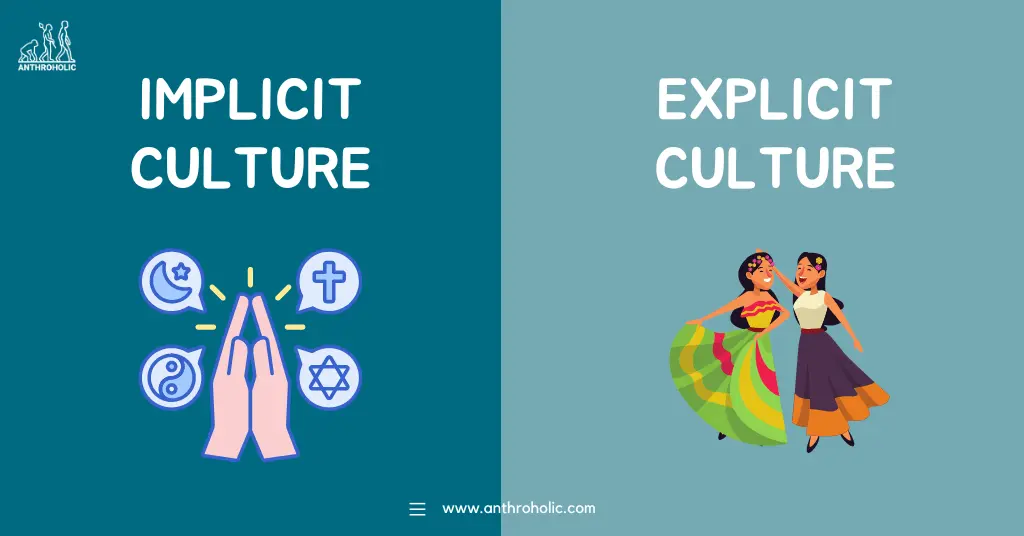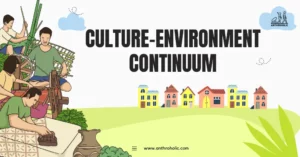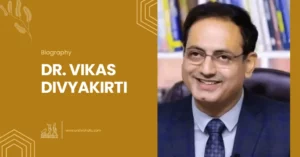AI Answer Evaluation Platform Live Now. Try Free Answer Evaluation Now
Implicit and Explicit Culture
When attempting to understand the multifaceted dimensions of culture, it is pivotal to recognize two essential aspects: implicit and explicit culture. These two contrasting elements allow us to examine culture in its full depth, just as one might decipher an intricate puzzle. Let’s dive deeper into the realm of culture and comprehend these complex components.

Defining the Two Worlds: Implicit and Explicit Culture
Before delving into their interplay, it’s crucial to first clearly define these two terms.
- Explicit Culture: Explicit culture consists of observable or tangible elements that we can easily identify, such as art, language, cuisine, clothing, rituals, and social conventions. It represents the visible part of the ‘cultural iceberg,’ elements that are immediately discernible upon encountering a new culture.
- Implicit Culture: On the other hand, implicit culture refers to the less tangible, more deeply ingrained elements of a culture, including beliefs, values, attitudes, assumptions, and perceptions. These components are often subconscious, forming the larger, submerged part of the ‘cultural iceberg.’ These elements are typically more challenging to identify but profoundly influence how individuals think, behave, and perceive the world.
Table 1: Comparison between Implicit and Explicit Culture
| Explicit Culture | Implicit Culture | |
|---|---|---|
| Definition | The tangible, observable aspects of a culture | The intangible, less visible elements of a culture |
| Examples | Language, Art, Food, Clothing | Beliefs, Values, Attitudes, Assumptions |
| Visibility | Immediately discernible | Requires more time and deeper interaction to understand |
The Vitality of Explicit Culture
Explicit culture forms the very surface of our cultural understanding. It presents the following facets:
- Defining Identity: Through unique traditions, language, clothing, and cuisine, explicit culture allows different societies to establish and celebrate their distinctive identities. These observable components of culture serve as markers of cultural distinction.
- Fostering Global Understanding: Explicit culture fosters a sense of familiarity and understanding among different cultures. Music, art, and food are universally relatable aspects that can act as bridges between diverse cultural backgrounds.
The Cultural Bridge: Exploring the Power of Art
A prime example of explicit culture’s role in bridging cultural gaps is the global influence of Japanese anime. Originating in Japan, anime has transcended boundaries, bringing a unique blend of storytelling, art, and culture to a global audience. It gives insight into Japanese traditions, customs, and language, serving as a vivid, engaging window into explicit Japanese culture.
The Depth of Implicit Culture
While explicit culture is easily visible, implicit culture forms the very bedrock of societal behaviors and attitudes. Here are some ways it influences us:
- Shaping Worldview: Implicit cultural elements, such as beliefs and values, substantially shape an individual’s worldview, decision-making process, and behavior.
- Influencing Communication: Implicit culture significantly affects how individuals communicate. For instance, some cultures may value direct communication, while others may lean towards subtlety and implication.
The Silent Language: Understanding High and Low Context Cultures
A key element of implicit culture is the concept of high-context and low-context cultures, initially proposed by anthropologist Edward T. Hall. This theory demonstrates how implicit cultural norms can influence communication style. High-context cultures, such as those in East Asia, rely heavily on implicit messages and shared understanding, emphasizing non-verbal cues. On the contrary, low-context cultures, like the U.S. or Germany, tend to favor explicit, direct communication.
The Interplay of Implicit and Explicit Culture
Implicit and explicit cultures are not standalone entities; they are intertwined in a dynamic relationship. Explicit culture reflects the surface of societal values, while implicit culture provides depth and meaning to these surface-level manifestations.
- The Dance of Symbols: A cultural symbol (explicit culture) might not mean much without understanding the underlying belief or value it represents (implicit culture). For instance, the act of gift-giving is a universal explicit cultural practice, but the occasions, types of gifts, and methods of giving are guided by implicit cultural norms.
- Language and Thought: Language, an explicit cultural element, is shaped by implicit cultural beliefs and attitudes, and in turn, it shapes our thought processes. For instance, the existence of multiple words for ‘snow’ in the Inuit language reflects their intricate relationship with their environment.
Table 2: Interplay between Implicit and Explicit Culture
| Implicit Culture | Explicit Culture | |
|---|---|---|
| Role | Provides depth and meaning | Reflects surface-level manifestations |
| Influence | Shapes worldview, Influences communication | Defines identity, Fosters global understanding |
Navigating Cultural Shifts: The Role of Implicit and Explicit Culture
As the world grows more interconnected through globalization, both implicit and explicit elements of culture play significant roles in guiding cultural shifts and evolution. These elements do not remain static; instead, they respond dynamically to socio-economic changes, technological advancements, and global influences.
- Cultural Adaptation and Fusion: Explicit culture often undergoes transformation through cultural fusion, where elements from diverse cultures blend to create something new. An example is the worldwide popularity of ‘fusion cuisine,’ where dishes combine culinary traditions from different cultures. On the other hand, implicit culture also evolves but generally at a slower pace. While new beliefs and values can emerge over time, deeply ingrained cultural attitudes and norms are often resilient to change.
- The Global Village: As societies become more multicultural, understanding both explicit and implicit cultural elements is more important than ever. Our global ‘village’ demands cultural competence that goes beyond recognizing different cuisines or traditional costumes. It necessitates a deep understanding of the underlying values, beliefs, and norms that influence people’s behaviors and perspectives.
Case Study: Cultural Shifts in the Digital Age
With the advent of digital technology and social media, both implicit and explicit cultures have taken new shapes. Explicit culture is easily shared and consumed online, from food recipes to fashion trends. However, digital platforms also subtly shape implicit culture by influencing users’ values and attitudes. For instance, the ‘selfie culture’ popularized on social media has reshaped perceptions of self-presentation and privacy.
The Challenges and Triumphs in the Implicit and Explicit Cultural Spectrum
While the journey through the cultural spectrum is fascinating, it also presents its unique set of challenges and triumphs.
- Challenges:
- Cultural Misunderstanding: Misinterpretation or misunderstanding of both implicit and explicit cultural elements can lead to miscommunication and cultural insensitivity.
- Cultural Appropriation: There’s a fine line between cultural appreciation and cultural appropriation. When elements of a culture are borrowed and used outside of their original cultural context, particularly by a dominant culture, it can lead to accusations of appropriation and disrespect.
- Triumphs:
- Cultural Exchange and Appreciation: The exploration and understanding of both implicit and explicit cultural elements promote cultural exchange and mutual appreciation, fostering global harmony.
- Bridging Cultural Divides: Through cultural understanding, we can bridge cultural divides, challenging stereotypes, and promoting intercultural dialogue.
Table 3: Challenges and Triumphs in the Implicit and Explicit Cultural Spectrum
| Challenges | Triumphs | |
|---|---|---|
| Key Points | Cultural Misunderstanding, Cultural Appropriation | Cultural Exchange and Appreciation, Bridging Cultural Divides |
Conclusion: The Harmonious Symphony of Culture
Navigating the dimensions of implicit and explicit culture provides us with a holistic understanding of the intricate layers of cultural diversity. Like a harmonious symphony, these two elements of culture come together to form the complex and beautiful phenomenon we know as ‘culture’. By understanding both, we can cultivate cultural sensitivity, respect diversity, and promote mutual understanding, contributing to a more inclusive and interconnected world.
Remember, culture is more than just the tip of the iceberg that we can see. By daring to dive beneath the surface and explore the depths of implicit culture, we can truly appreciate the vast, vibrant expanse of human cultural experience.



